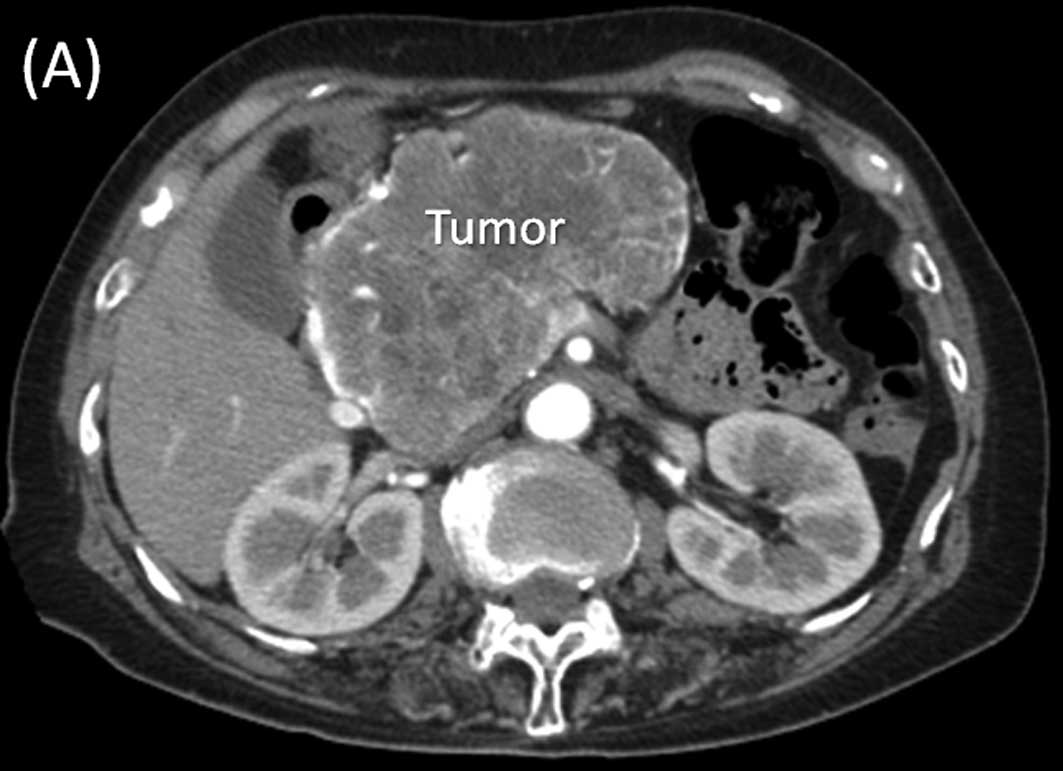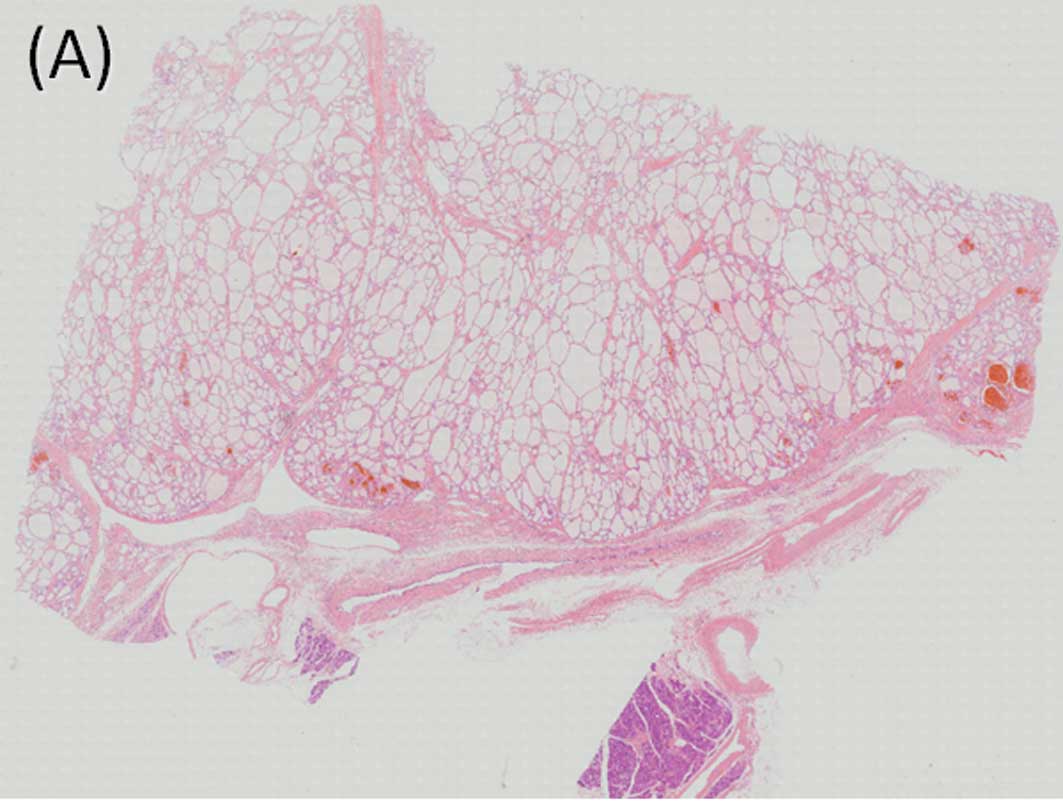Giant serous microcystic adenoma of the pancreas safely resected after preoperative arterial embolization
- Authors:
- Published online on: September 1, 2010 https://doi.org/10.3892/ol_00000148
- Pages: 841-844
Metrics: Total
Views: 0 (Spandidos Publications: | PMC Statistics: )
Total PDF Downloads: 0 (Spandidos Publications: | PMC Statistics: )
Abstract
Serous microcystic adenomas are rare and account for 1-2% of all exocrine pancreatic tumors and 25% of all pancreatic cystic neoplasms. Recently, with advances in imaging techniques, these adenomas have been identified at an increasing frequency. A 63-year-old woman visited her doctor in 1999 due to a gastric deformity detected by upper gastrointestinal endoscopy. An abdominal computed tomography scan revealed a cystic lesion measuring 6.0 cm in diameter, resulting in a diagnosis of serous microcystic adenoma of the pancreatic head. During follow-up, the tumor increased steadily in size, measuring 6.0 cm in diameter in 1999 and 13.0 cm in 2008, while remaining asymptomatic throughout this period of time. The risk of malignant transformation appears to be low even over the long-term. However, some cases of malignant transformation to serous cystadenocarcinoma have recently been reported. In this case, assessment of the relationship between the tumor and adjacent vascular structures, such as massive drainage vein development on the surface or tumor flow into the portal and superior mesenteric veins and the celiac and superior mesenteric arteries, was critical for determining tumor resectability. The risk of massive intra-operative hemorrhage was felt to be considerable, given the extent of the veins on the surface of the tumor, as well as the size and location of the primary pancreatic mass. Therefore, preoperative embolization of the tumor-feeding arteries arising from the celiac axis (gastroduodenal, splenic and dorsal pancreatic arteries) was performed. Tumor resection with pancreaticoduodenectomy was performed without a blood transfusion, with an estimated blood loss of 570 ml. The final pathology confirmed the diagnosis of serous microcystic adenoma. The patient is currently alive and disease-free. Preoperative partial embolization of the tumor feeding arteries and intra-operative resection of the right gastric and inferior pancreatoduodenal arteries, allowed the tumor blood supply to be arrested without preoperative tumor necrosis. Subsequently, intraoperative blood loss was reduced. Preoperative partial embolization of the feeding arteries is useful for the resection of hypervascular large tumors of the pancreas.













